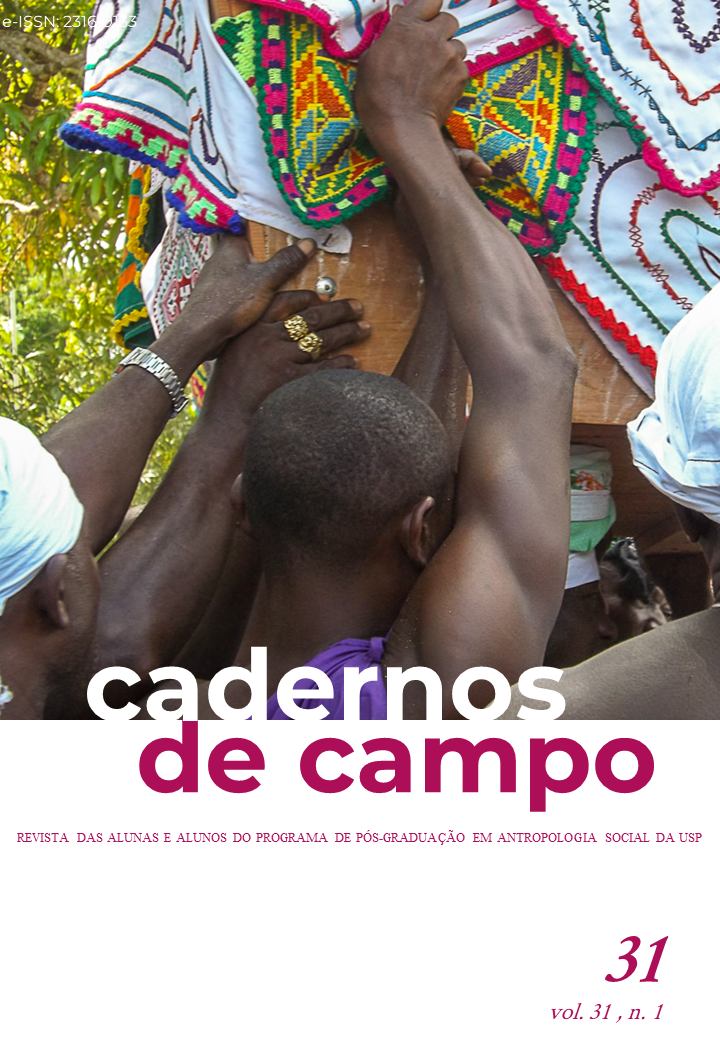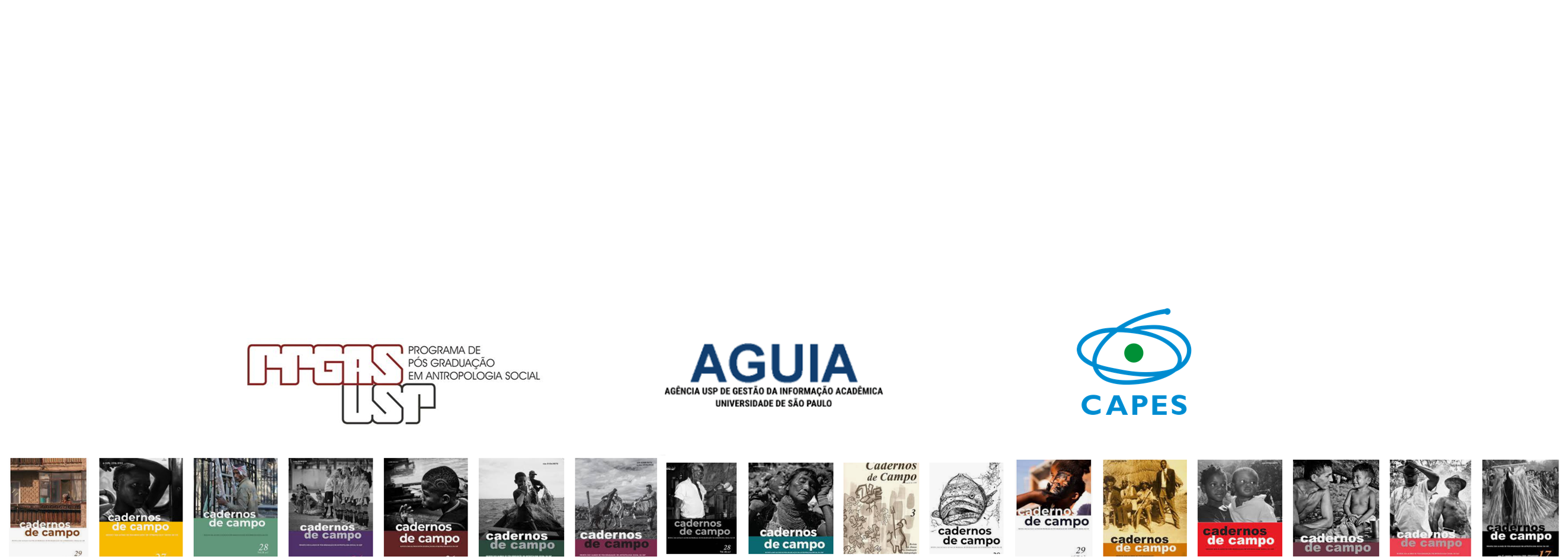Nuevos espacios clínicos para Cannabis sativa y hongos Psilocibe en Chile
DOI:
https://doi.org/10.11606/issn.2316-9133.v31i1pe197349Palavras-chave:
cannabis sativa, cogumelos com psilocibina, medicinaResumo
Neste texto, proponho uma reflexão centrada nos novos espaços clínicos, organizados em torno dos usos medicinais da cannabis, durante a última década no Chile, e ultimamente também, em torno dos cogumelos ricos em psilocibina. Esses novos espaços, que pretendem se inscrever no âmbito da medicina científica oficial, emergem nas fronteiras móveis entre duas tendências históricas contrárias – proibição e liberação das drogas. O objetivo deste texto é expor brevemente as condições que permitiram a emergência material desses novos espaços, bem como dar uma ideia do tipo de subjetividade que perpassa a clínica que neles é praticada. O texto propõe algumas tipologias e conceitos provisórios para a compreensão dessa subjetividade. Acompanho e participo diretamente da formação desses espaços clínicos desde sua criação no Chile, e acompanho, há vinte anos, como paciente, médico e antropólogo, usos rituais e terapêuticos dessas e de outras drogas, em outros países latino-americanos.
Downloads
Referências
BECERRA, Mauricio. 2005. Entrevista a Bachelet, Hirsch y Lavín. Cañamo. Revista de psicoactivos y cultura cannábica, n. 4: 26-33.
BERGUER, Alan; BERGUER, R. 2003. Medicina basada en evidencia (MBE): Contras. Revista Española de Cirugía Oral y Maxilofacial, vol. 25, n. 5: 273-279.
BURROUGHS, William Seward. 1957. Letter from a master addict to dangerous drugs. 1957. British Journal of Addiction to Alcohol and Other Drugs, vol. 53, n. 2: 119-132.
CALAFAT, Amador; MONTSE, Juan; BECOÑA, Elisardo; GÓMEZ, C.; GIL, E.; LLOPIS, J. 2000. Estrategias y organización de la cultura pro-cannabis. Adicciones, vol. 12: 231-274.
CAÑAMO. 2019. “La realidad de los dispensarios en Chile: La ley protege a los clubes cannábicos. Las fuerzas de la ley”. Revista Cañamo, 7 abril 2019. Disponible en https://canamo.cl/la-realidad-de-los-dispensarios-en-chile-la-ley-protege-a-los-clubes-cannabicos-las-fuerzas-de-la-ley-no/ Acceso en 21 mayo 2022.
CARHART-HARRIS, R.; FRISTON K. J. 2019. REBUS and the Anarchic Brain: Toward a Unified Model of the Brain Action of Psychedelics. Pharmacological Reviews, vol. 71, n. 3: 316-344. DOI: 10.1124/pr.118.017160
COLMED. COLEGIO MÉDICO DE CHILE. 2019. Documento de posición del Colegio Médico de Chile, sobre el Proyecto de Ley que “Modifica el Código Sanitario para incorporar y regular el uso medicinal de productos derivados de cannabis”. Disponible en: https://www.colegiomedico.cl/wp–content/uploads/2019/06/documento_cultivo_ seguro.pdf Acceso en 19 abril 2021
COLE-TURNER, Ronald. 2021. Psychedelic Epistemology: William James and the “Noetic Quality” of Mystical Experience. Religions, vol. 12, n. 1058: 16, 2021. Disponible en: https://www.mdpi.com/2077-1444/12/12/1058
CORMIER, Zoe. 2022. “The Brave New World of Legalized Psychedelics Is Already Here”. The Nation – Sección Busines. Mar, 2022 Disponible en https://www.thenation.com/article/society/legal-drugs-psychedelics-corporate/ Acceso en 3 abril 2022
DUPUIS, David. 2021. Psychedelics as Tools for Belief Transmission. Set, Setting, Suggestibility, and Persuasion in the Ritual Use of Hallucinogens. Frontiers in psychology, vol. 12, 2021. DOI: 10.3389/fpsyg.2021.730031
ESCOHOTADO, Antonio. 1998. Historia general de las drogas, vol. 3. Madrid: Alianza Editorial, Séptima Edición.
FOTIOU, Eugenia. 2016. The Globalization of Ayahuasca Shamanism and the Erasure of Indigenous Shamanism. Anthropology of Consciousness, vol. 27, n. 2: 151-179. DOI: 10.1111/anoc.12056
FUNDACIÓN EPISTEMONIKOS. 2018. Declaración pública de Fundación Epistemonikos y Organizaciones firmantes frente a la discusión sobre uso medicinal de Cannabis y productos derivados en el Congreso de Chile; Declaración pública online, 3 de Mayo de 2018. Disponible en https://es.epistemonikos.cl/2018/05/03/fundacion-epistemonikos-y-organizaciones-adherentes-informan-el-uso-de-cannabis-en-personas-enfermas-no-produce-mejoria-y-causa-dano-a-la-salud/ Acceso en 3 marzo 2022.
FREEMAN, Tom. P.; WINSTOCK, Adam. R. 2015. Examining the profile of high-potency cannabis and its association with severity of cannabis dependence. Psychological medicine, vol. 45, n. 15, pp. 3181–3189. DOI: 10.1017/S0033291715001178
GARCIA-ROMEU, Albert.; RICHARDS, William. A. 2018. Current perspectives on psychedelic therapy: use of serotonergic hallucinogens in clinical interventions. International Review of Psychiatry, vol. 30, n. 4: 291-316. DOI 10.1080/09540261.2018.1486289
GEARIN Alex. K.; CALAVIA SAEZ, Oscar. 2021. Altered Vision: Ayahuasca Shamanism and Sensory Individualism. Current Anthropology, vol. 62, n. 2 : 157-DOI 10.1086/713737
GRIFFITHS Roland R.; JOHSON Mathew W.; RICHARDS, William A.; RICHARDS, Brian D.; MCANN, Una.; JESSE, Robert. 2011. Psilocybin occasioned mystical-type experiences: immediate and persisting dose-related effects. In: Psychopharmacology, v. 218, n. 4: 649-65. Disponible en https://pubmed.ncbi.nlm.nih.gov/21674151/ Acceso en 15 abril 2022.
GROTSCH, Katharina; FOKIN, Valery. 2022. Between Science and Big Business: Tapping Mary Jane’s Uncharted Potential. ACS Central Science, vol. 8, n. 2: 156-168.
HADAR, Aviad, DAVID, Jonathan, SHALIT, Nadav, ROSEMAN, Leor, GROSS, Raz, SESA, Ben, & LEV-RAN, Shaul. 2022. “The Psychedelic Renaissance. Clinical Research: A Bibliometric Analysis of Three Decades of Human Studies with Psychedelics”. Journal of psychoactive drugs, n. 10: 1-10. DOI: 10.1080/02791072.2021.2022254
ILLANA-ESTEBAN, Carlos. 2021. “Los hongos alucinógenos, Wasson y la CIA”. Yesca, vol. 33: 20-25.
JEFFERSON Robin S. 2019. “Magic Mushrooms as Medicine? Johns Hopkins Scientists Launch Center for Psychedelic Research. Say Psychedelics Could Treat Alzheimer’s, Depression And Addiction”. Forbes, 12 septiembre 2019. Disponible https://www.forbes.com/sites/robinseatonjefferson/2019/09/12/magic-mushrooms-as-medicine-johns-hopkins-scientists-launch-center-for-psychedelic-research-say-psychedelics-could-treat-alzheimers-depression-and-addiction/?sh=62fc96f2c171 Acceso en 15 abril 2022
KOHEKA Maja; SÁNCHEZ AVILÉS, Constanza.; ROMANÍ, Oriol.; BOUSO, Jose C. 2021. “Ancient psychoactive plants in a global village: The ritual use of cannabis in a self-managed community in Catalonia”. International Journal of Drug Policy, vol. 98, n. 103390.
LEA, Toby; AMADA, Nicole; JUNGABERLE, Henrik; SHECHKE, Henrike; SCHERBAUM, Norbert; KLEIN, Michael. 2020. “Perceived outcomes of psychedelic microdosing as self-managed therapies for mental and substance use disorders”. Psychopharmacology, vol. 237, n. 5: 1521–1532, 2020. DOI 10.1007/s00213-020-05477-0
LIN Tao. 2014. “Psilocybin, the Mushroom, and Terence McKenna”. Revista Vice. Agosto 2014. Disponible en https://www.vice.com/en/article/yvqqpj/psilocybin-the-mushroom-and-terence-mckenna-439 Acceso en 4 marzo 2022.
LU, Hui-Chen; MACKIE, Ken. 2016. An Introduction to the Endogenous Cannabinoid System. Biological psychiatry, vol. 79, n. 7: 516–525. DOI: 10.1016/j.biopsych.2015.07.028
LUTKAJTIS, Anna. 2020. “Entity encounters and the therapeutic effect of the psychedelic mystical experience”. Journal of Psychedelic Studies, vol. 4, n. 3: 171-178. DOI: 10.1556/2054.2020.00143
MARLATT, Alan. 1996. “Harm Reduction: Come as you are”. Addictive Behaviors, v. 21, n. 6: 779-788. Disponible en: https://www.sciencedirect.com /science/article/abs/pii/0306460396000421#aep-article-footnote-id1 Acceso en 21 marzo 2022
METZNER, Ralf. 1998. “Hallucinogenic Drugs and Plants, in Psychotherapy and Shamanism”. Journal of Psychoactive Drugs, vol. 30, n. 4: 333-341. DOI 10.1080/02791072.1998.10399709
MILLIÈRE, Raphael; CARHART-HARRIS, Robin L.; ROSEMAN, Leor; FYNN-MATHIS Trautwein; BERKOVICH-OHANA, Aviva. 2018. “Psychedelics, Meditation, and Self-Consciousness”. Frontiers in Psychology, vol. 9, n. 1475. DOI 10.3389/fpsyg.2018.01475
MINISTERIO DE SALUD, CHILE. 2015. Decreto 84, 30 de Octubre de 2015.
NATIONAL ACADEMIES OF SCIENCES, ENGINEERING, and MEDICINE. Health and Medicine Division; Board on Population Health and Public Health Practice; Committee on the Health Effects of Marijuana: An Evidence Review and Research Agenda. Therapeutic Effects of Cannabis and Cannabinoids. The Health Effects of Cannabis and Cannabinoids: The Current State of Evidence and Recommendations for Research. Washington (DC): National Academies Press. 12 enero 2017. Disponible en: https://www.ncbi.nlm.nih.gov/books/NBK425767/
NUTT, David. 2022. “Why doctors have a moral imperative to prescribe and support medical cannabis”. British Medical Journal (Clinical research ed.), n. 376. Disponible en https://www.bmj.com/content/376/bmj.n3114.full Acceso en 5 abril 2022
OBRADORS-PINEDA, Anna; BOUSO, José-Carlos; PARÉS-FRANQUERO, Oscar; ROMANÍ, José-Oriol. 2021. Harm reduction and cannabis social clubs: Exploring their true potential. International Journal of Drug Policy, vol. 97, n. 103358. Disponible en: https://www.sciencedirect.com/science/article/abs/pii/S0955395921002632?via%3Dihub Acceso en 19 abril 2021
ONA, Genís; TRONCOSO, Sebastián. 2019. “Long-lasting analgesic effect of the psychedelic drug changa: A case report”. Journal of Psychedelic Studies, vol. 3, n. 1: 1-7. DOI: 10.1556/2054.2019.001
OTT, Jonathan. 2008. “Mamá Cocaína: Alcaloide Espíritu”. Cañamo: La revista de la cultura del cannabis, n. 132: 120-121.
PADILLA Marcelo. 2014. “Hay que pasar del volado al expandido”. Revista 93: revista de la Defensoría Penal Pública, año 6, n. 10: 60-67, 2014. Disponible en: https://www.dpp.cl/resources/descargas/revista93/Revista93n10.pdf Acceso en 3 abril 2022
PACE, Brian; DEVENOT, Nese. 2021. “Right-Wing Psychedelia: Case Studies in Cultural Plasticity and Political Pluripotency”. Frontiers in Psychology, n. 10. Disponible en https://www.ncbi.nlm.nih.gov/pmc/articles/PMC8717779/ Acceso en 4 abr. 2022
PAGANO Cristina, NAVARRA Giovanna, COPPOLA Laura, AVILIA Giorgio, BIFULCO Maurizio, LAEZZA Chiara. 2022. "Cannabinoids: Therapeutic Use in Clinical Practice". International Journal of Molecular Sciences, vol. 23, n. 6 : 33-44. DOI 10.3390/ijms23063344
PARNHAM, Michael J. GEISSLINGER, Gerd. 2019. “Pharmacological plasticity—How do you hit a moving target?”. Pharmacol Research Perspectives, vol. 7, n. 6. DOI 10.1002/prp2.532.
PEREZ-SOTO, Carlos. 2012. Una nueva antipsiquiatría: crítica y conocimiento de las técnicas de control psiquiátrico. Santiago: Editorial LOM. Disponible en https://www.academia.edu/40622003/Carlos_P%C3%A9rez_Soto_Una_nueva_antipsiquiatr%C3%ADa Acceso en 7 abril 2022
RUCK Carl. 2010. “Wasson and the psychedelic revolution”. Brainwaving. Disponible en http://www.brainwaving.com/2010/01/18/wasson-and-the-psychedelic-revolution/ Acceso en 15 mar. 2022
RUSSO, Ethan. 2011. “Taming THC: potential cannabis synergy and phytocannabinoid-terpenoid entourage effects”. British Journal of Pharmacology, vol. 163, n. 7: 1344–1364, DOI 10.1111/j.1476-5381.2011.01238.x
SÁNCHEZ Sergio. 2014. Guardar silencio: el consumidor, el daño y el reglamento de la Ley n. 20.000. Revista 93: revista de la Defensoría Penal Pública, n. 10, año 6: 57-60
SANCHEZ, Sergio. 2014. Principales paradigmas preventivos en el mundo de hoy. Revista 93: revista de la Defensoría Penal Pública, n.10, año 6: 57-60.
MUSALEM, Pedro; SANCHEZ, Sergio. (Comp.). 2011. “Aportes para una nueva política de drogas”. Santiago: Colegio Médico de Chile. pp. 20-29. Disponible en https://www.lar.cl/doc/textos/aportesparaunanuevapoliticadrogasChile.pdf Acceso en 19 abril 2021
SCHLEIDER, Lihi Bar-Lev; ABUHASIRA, Ran; NOVACK, Victor. 2018. “Medical cannabis: aligning use to evidence-based medicine approach”. British Journal of Clinical Pharmacology, vol. 84, n. 11: 2458–2462. DOI 10.1111/bcp.13657.
STUYT, Elizabeth. 2018. The Problem with the Current High Potency THC Marijuana from the Perspective of an Addiction Psychiatrist. Missouri Medicine, vol. 115, n. 6: 482–486.
SCHUBERT, Georgy. 2014. Duda Razonable. Las diversas dimensiones del debate sobre la Ley n. 20.000. Revista 93: revista de la Defensoría Penal Pública, n. 10, año 6: 4-8, 2014. Disponible en https://www.dpp.cl/resources/descargas/revista93/ Revista93n10.pdf Acceso en 3 abril 2022
SZIGETI, Balazs; KARTNER Laura; BLEMINGS, Alla; ROSAS, Fernndo; FEILDING, A.; NUTT, David J.; CARHART-HARRRIS, Robin L.; ERRITZOE, David. 2021. Self-blinding citizen science to explore psychedelic microdosing. Elife, v. 2 n. 10. Disponible en https://pubmed.ncbi.nlm.nih.gov/33648632/ Acceso en 10 abril. 2022
SUPPORT DONT PUNISH. 2022. Sitio web, página principal, 2022. disponible en https://supportdontpunish.org/, acceso en 21 de mayo 2022.
VOEKS, Robert. 2014. “Cannabis: Evolution and Ethnobotany”. The AAG Review of Books, vol. 2 n. 2: 54-56, DOI 10.1080/2325548X.2014. 901859.
WINKELMAN, Michael J. 2021. “The Evolved Psychology of Psychedelic Set and Setting: Inferences Regarding the Roles of Shamanism and Entheogenic Ecopsychology”. Frontiers in pharmacology. vol. 23. DOI 10.3389/fphar.2021.619890
Downloads
Publicado
Edição
Seção
Licença
Copyright (c) 2022 Cadernos de Campo (São Paulo - 1991)

Este trabalho está licenciado sob uma licença Creative Commons Attribution-NonCommercial-ShareAlike 4.0 International License.
Autorizo a Cadernos de Campo - Revista dos Alunos de Pós-Graduação em Antropologia Social da Universidade de São Paulo (PPGAS-USP) a publicar o trabalho (Artigo, Ensaio, Resenha,Tradução, Entrevista, Arte ou Informe) de minha autoria/responsabilidade assim como me responsabilizo pelo uso das imagens, caso seja aceito para a publicação.
Eu concordo a presente declaração como expressão absoluta da verdade, também me responsabilizo integralmente, em meu nome e de eventuais co-autores, pelo material apresentado.
Atesto o ineditismo do trabalho enviado.





 eISSN: 2316-9133
eISSN: 2316-9133